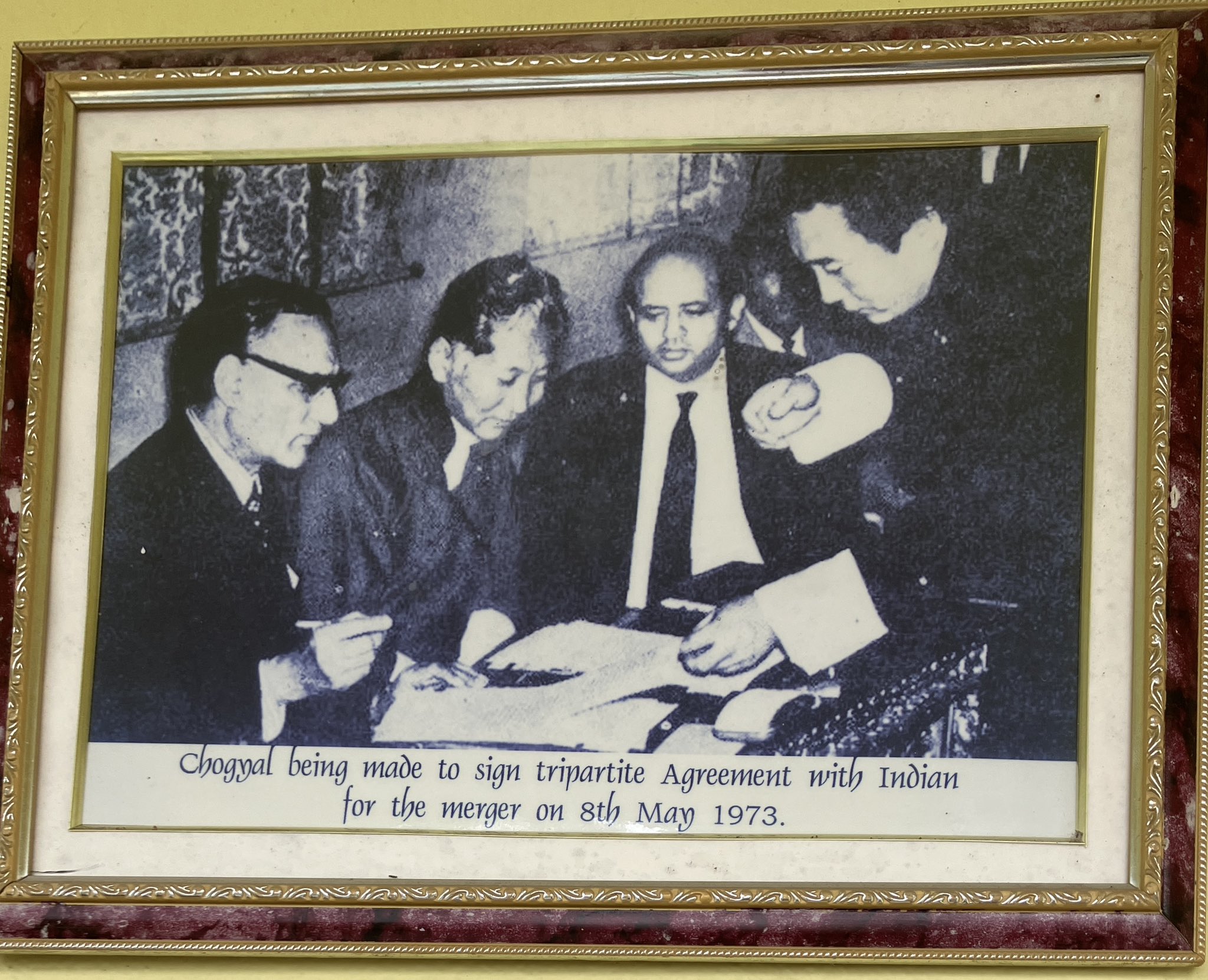Sikkim India Merger
RAW once removed India’s last ruling King. India’s spies launched a secret operation against the ruler of Sikkim in 1973. The goal was to make Sikkim a part of India.
In 1975, Sikkim became India’s 22nd state. Before then, the state had been a monarchy with a ruler known as the Chogyal. The Chogyal’s dynasty had ruled Sikkim for over 300 years. And it was ended with some help from India’s Research and Analysis Wing.
For centuries, Sikkim had been a small but independent kingdom in the Himalayas. But after the rise of the British Empire in India, Sikkim gradually lost its independence. It became a protectorate of British in the late 19th century but was still ruled by the Chogyals.
When India became independent, Sikkim was expected to merge with India. But Nehru wanted Sikkim to remain outside India. Pro-democracy parties in Sikkim demanded a merger with India. They approached India for support, which it refused to give. And so, this movement failed.
For India, stability was its primary goal. Since Sikkim was on the border with China, India needed a strong defence presence there. The Chogyal promised to defend India’s interests and India kept him in power. This deal worked for decades. But, things began to change in the 1960s.
Sikkim was ruled by its 12th Chogyal Palden Thondup Namgyal. The Chogyal was unsatisfied with Sikkim’s protectorate status. Instead, he wanted more independence and autonomy from India. In 1967, the Chogyal and Sikkim’s ruling elite began asking for this more publicly.
He called for a revision of the 1950 Indo-Sikkim Treaty to give him more power. Sikkim govt newspapers began attacking India as an “imperialist power”. Indira Gandhi agreed to negotiate with the Chogyal as her govt needed to maintain stability on the border with China.
She offered to upgrade Sikkim’s political status and grant more political control to the Chogyal. But even this was not acceptable to Sikkim’s ruler. India began to suspect that the Chogyal really wanted independence. And this was unacceptable to the Indian government.
In 1972, Indira Gandhi called RN Kao, the chief of India’s Research & Analysis Wing (RAW). She asked Kao to “do something about Sikkim”. Within a few weeks, Gandhi approved a special operation. The aim was to make Sikkim a part of India.
The operation was launched in early 1973. RAW’s officers in Sikkim began reaching out to major pro-democracy leaders like Kazi Lhendup Dorji. It informed them that India would no longer protect the Chogyal as it did during the 1949 pro-democracy agitation.
This was big news since India’s support had largely kept the Chogyal in power. By 1973, Sikkim’s ruler was unpopular because of inequality and social discrimination. RAW worked with pro-democracy parties to use this to pressure the ruler.
In early 1973, two parties - Sikkim National Congress and Janata Congress - launched large protests against the Chogyal. RAW worked to unite these two parties. India’s refusal to help the Chogyal meant that he was forced to sign an agreement giving up a lot of his political power.
An India-appointed Chief Executive took control of the Sikkim govt. The new agreement also called for free elections. RAW’s next move was to ensure the pro-India Sikkim Congress won a strong majority. It helped convince leaders of various ethnic groups to back the Sikkim Congress.
In the 1974 Sikkim elections, the India-backed Sikkim Congress won a landslide victory. It used its majority to invite India to help write a new Constitution for Sikkim. This constitution was opposed heavily by the Chogyal, who tried to fracture Sikkim Congress coalition. He even tried to meet Indira Gandhi to stop the new Constitution. But it was too late to salvage his relationship with India. Gandhi refused to help & the Sikkim Assembly passed the Constitution. India’s Parliament moved quickly & gave Sikkim the status of an Associate State.
The Chogyal was now a ruler in name only. RAW’s operations then ended their final phase. All that was left to do was engineer Sikkim’s merger with India. This was made easier by a desperate Chogyal. On a visit to Nepal in 1975, he sought help from Pakistan and China.
The Chogyal even threatened to involve the UN in Sikkim. These comments sparked outrage. It also allowed Sikkim’s democratic parties to introduce a resolution to abolish the post of Chogyal. They also called for a referendum on whether Sikkim should join India.
On April 10, 1975, Sikkim’s Assembly voted to end the 300-year old position of the Chogyal. Just days later, a little over 97% of voters backed Sikkim’s merger with India. On May 16, 1975, Sikkim became India’s 22nd state. And RAW’s special operation came to an end.

Source: